Can Perennial Plants Be Annuals?
Perennials vs Annuals is a critical distinction every gardener should grasp, as it requires knowledge, planning, and a deep understanding of plant types and their growth habits. This understanding not only influences plant selection and garden design but also dictates maintenance practices. This article delves into whether perennial plants can behave like annuals, exploring the characteristics of each, clearing up common misconceptions, and discussing instances where perennials may be treated as annuals.
Annuals vs. Perennials
Definitions
Annuals are plants that complete their entire life cycle—germination, flowering, seed production, and death—within a single growing season. They are known for their rapid growth and vibrant blooms, often bringing a splash of color to gardens. Some popular examples of annuals include:
- Petunias: Known for their trumpet-shaped flowers, petunias are a favorite for hanging baskets and garden beds.
- Marigolds: With their bright orange and yellow blooms, marigolds are often used in gardens for pest control and aesthetic appeal.
- Zinnias: These flowers come in various colors and are beloved for their long-lasting blooms and ease of care.
In contrast, perennials are plants that live for multiple years. They typically go through a cycle of dormancy during the winter and re-emerge in the spring. Perennials may take longer to establish compared to annuals, but they often require less effort over time. Common examples of perennials include:
- Echinacea (Coneflower): Renowned for its medicinal properties, echinacea features striking purple flowers and attracts pollinators.
- Daylilies: Known for their hardy nature, daylilies produce blooms that last only one day but are prolific throughout the season.
- Hostas: Primarily grown for their foliage, hostas thrive in shady areas and offer a variety of leaf colors and textures.
Life Cycle and Growth Habits
The life cycle of annuals is straightforward: they germinate, grow, flower, produce seeds, and die—all within one growing season. This fast-paced cycle allows gardeners to enjoy a colorful display quickly, but it also means that annuals must be replanted every year.
Perennials, conversely, have a more complex life cycle. After establishing their root systems, they may not produce flowers in their first year, focusing instead on building energy reserves. Once established, they return year after year, often increasing in size and flower production as they mature. This longevity can provide gardeners with a more stable and sustainable landscape.
Clearing Up Misconceptions
Misconception 1: All Perennials Are Long-Lived and Low-Maintenance
One common misconception is that all perennials are long-lived and require little maintenance. While many perennials do exhibit these traits, others can be quite short-lived and require significant care. For example, some perennials like delphiniums or peonies may only last a few years in less-than-ideal conditions, or they may suffer from pest issues or diseases.
Misconception 2: Perennials Are Always More Economical
Another misconception is that perennials are always a more economical choice for gardeners. While perennials can save money over time due to their re-emergence each year, they often require a higher initial investment. Some perennials, especially those that are less common or hybridized, can be more expensive than annuals. Additionally, the maintenance required for establishing a perennial garden can be more labor-intensive in the early stages.
Misconception 3: All Annuals Are Fragile
Some gardeners assume that all annuals are fragile and less hardy than perennials. While it’s true that many annuals are sensitive to frost and harsh conditions, there are hardy annuals like pansies and snapdragons that can withstand cooler temperatures. Understanding the specific needs and tolerances of each plant type is crucial for successful gardening.
Perennials Grown as Annuals
While perennials are designed to live for multiple seasons, there are instances where they may be grown as annuals. This can occur for various reasons, including climate limitations, growth habits, and aesthetic choices. Below are several scenarios where gardeners might opt to treat perennials as annuals.
1. Climate and Hardiness Zones
One of the most significant factors influencing whether a perennial behaves like an annual is climate. Each plant species is assigned a hardiness zone, which indicates its ability to withstand local temperatures and conditions. For example, a perennial that thrives in USDA Zone 5 may struggle to survive in Zone 9, where winters are milder, but summers can be more extreme.
In regions where temperatures fluctuate dramatically, some perennials may not survive the winter. Gardeners in warmer climates may find that certain cold-hardy perennials, such as lavender or russelia, do not thrive or may die back completely. As a result, these plants may be treated like annuals, replanted each year to ensure a vibrant display.
2. Growth Habit
Certain perennials may have growth habits that lead them to be treated as annuals. Some perennials, like coreopsis or gaillardia, have a shorter lifespan and may only flourish for a few years before declining. These plants can be grown as annuals if gardeners want consistent blooms without the long-term commitment of caring for a perennial.
In addition, some perennials produce blooms that are less reliable from year to year. For example, shasta daisies may not bloom in their second year without proper care, making them an option for annual treatment if consistent blooms are desired.
3. Seasonal Displays
Gardeners often create seasonal displays to celebrate specific holidays or events, utilizing annuals for their short-lived blooms. However, perennials can also be incorporated into these displays. For instance, a gardener might plant astilbe in a spring garden to provide color and then treat it as an annual by replacing it with summer-blooming annuals once it starts to fade.
Using perennials in this way allows gardeners to achieve a diverse and colorful display while still benefiting from the long-term presence of perennials in the garden.
4. Container Gardening
Container gardening is increasingly popular for its versatility and space-saving qualities. However, perennials may not always thrive in containers due to their specific growing requirements. In these cases, gardeners might choose to replace perennials with annuals that are better suited to container conditions.
For example, geraniums are often used in containers because they bloom continuously and are easy to maintain. However, if a gardener wants a different aesthetic, they might plant perennial salvia instead, even if they know it may not survive the winter in the container. In this case, treating it as an annual allows for greater flexibility in design.
Factors Influencing Plant Behavior
To fully understand how and why perennials can be treated as annuals, it’s crucial to explore the factors influencing their growth and behavior. Below are some key considerations:
1. Soil Conditions
Soil quality plays a significant role in the health and longevity of both annuals and perennials. Perennials often require well-draining soil with adequate nutrients to thrive. Poor soil conditions can stunt growth, making it challenging for perennials to establish themselves.
In cases where soil quality is subpar, gardeners may find that perennials do not flourish as expected, leading them to treat these plants as annuals. On the other hand, enriching the soil can significantly improve the success rate of perennials, making them more viable long-term.
2. Watering Practices
Watering practices are essential for both plant types. Annuals may require more frequent watering, especially during hot summer months, while perennials often develop deeper root systems that allow them to access moisture more efficiently.
However, if perennials do not receive adequate water, particularly during their establishment phase, they may fail to thrive. Gardeners in drier regions may choose to treat drought-sensitive perennials like fuchsia as annuals, ensuring they replace them yearly to maintain a vibrant display.
3. Pest and Disease Management
Pests and diseases can significantly impact plant health, leading to poor growth or death. While many annuals have short life cycles that allow them to escape some pest issues, perennials face ongoing challenges. Some perennials are more susceptible to diseases or pests, such as powdery mildew in phlox.
In cases where a perennial plant struggles with pest problems, gardeners may decide to treat it as an annual to avoid ongoing maintenance and issues. This decision can help ensure that their garden remains visually appealing without excessive effort.
4. Maintenance Requirements
The maintenance needs of plants can also influence how they are treated. While perennials may require less care over time, some may need more attention during their establishment phase. Gardeners may find that certain perennials, like peonies, need regular pruning or staking to remain healthy.
If the maintenance becomes burdensome, or if a gardener prefers a lower-maintenance garden, they might choose to grow these perennials as annuals, planting them each year for a more manageable display.
Best Practices for Growing Perennials as Annuals
If you choose to grow perennials as annuals, there are several best practices to keep in mind to ensure a successful gardening experience.
1. Select the Right Perennials
Choose perennials that have proven to be adaptable to your local climate and growing conditions. Research local hardiness zones and select plants known for their reliability and resilience in your area. Some perennials are better suited for annual treatment due to their growth habits or aesthetic qualities.
2. Prepare the Soil
Before planting, prepare the soil by enriching it with organic matter, such as compost. This will provide essential nutrients and improve drainage, ensuring the best possible environment for your plants. Testing the soil pH and nutrient levels can also help guide amendments for optimal growth.
3. Implement a Care Routine
Establish a routine for watering, feeding, and pruning. Regular watering is essential, especially during dry spells, while periodic fertilization can help boost growth. If you choose to treat certain perennials as annuals, monitor their growth closely to ensure they are performing well.
4. Be Mindful of Pests and Diseases
Stay vigilant against pests and diseases by inspecting plants regularly. Implement preventative measures, such as companion planting or using organic pest control methods, to keep your garden healthy. Understanding the common pests and diseases associated with your chosen perennials can help you take timely action.
5. Enjoy Seasonal Displays
Incorporate perennials into your seasonal displays for added interest. Consider using complementary annuals to enhance the overall aesthetic of your garden while providing flexibility for future seasons. Rotating plantings and experimenting with combinations can lead to stunning results.
Conclusion
While perennial plants are designed to be long-lasting and resilient, there are circumstances where they may behave like annuals. Understanding the differences between annuals and perennials, along with the factors influencing plant behavior, is crucial for successful gardening.
By recognizing the nuances of plant life cycles, climate considerations, and maintenance requirements, gardeners can make informed choices that align with their goals and preferences. Whether you opt for the reliability of perennials or the vibrant bursts of color from annuals, both play unique roles in creating a beautiful and diverse garden. Embrace the versatility of your plants and enjoy the journey of cultivating a thriving outdoor space!


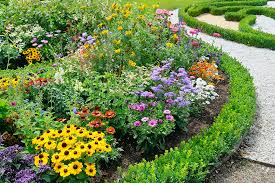
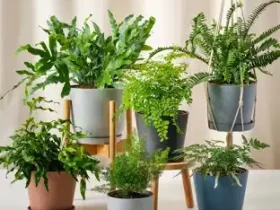
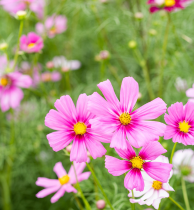
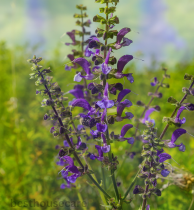
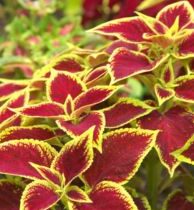
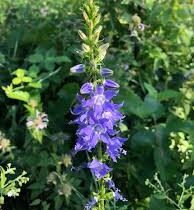
Leave a Reply
View Comments